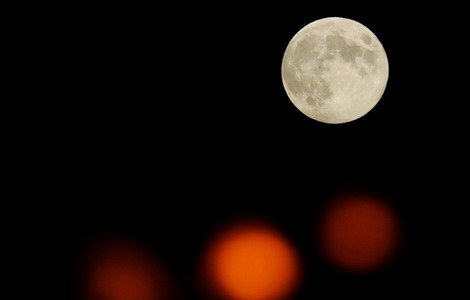NASA gives up on lost comet probe
Updated: 2013-09-21 09:51
(Agencies)
|
||||||||
CAPE CANAVERAL, Fla. - NASA is calling off attempts to find its Deep Impact comet probe after a suspected software glitch shut down radio communications in August, officials said on Friday.
The spacecraft was launched in January 2005 for a close-up study of Comet Tempel-1.
It was not just a passive experiment. The probe released an 820-pound (372-kg) metal slug that crashed into the comet's nucleus, triggering a shower of particles for analysis by the mother spacecraft and remote observatories.
Deep Impact continued its comet quest with a flyby of Hartley 2 in November 2010 and long-distance studies of other bodies, including the approaching Comet ISON. The spacecraft was also used to look for planets beyond the solar system.
NASA last heard from Deep Impact on August 8. Engineers suspect a software problem caused the spacecraft to lose its orientation system, cutting off radio contact with Earth in the process.
After a month of fruitless attempts to find the probe, NASA on Friday announced it was formally ending the mission.
"Despite this unexpected final curtain call, Deep Impact already achieved much more than ever was envisioned," Lindley Johnson, who oversees the program at NASA Headquarters in Washington, said in a statement.
University of Maryland astronomer Michael A'Hearn, who led the Deep Impact science team, said in a separate statement: "I'm saddened by its functional loss. But, I am very proud of the many contributions to our evolving understanding of comets that it has made possible."
"These small, icy remnants of the formation of our solar system are much more varied, both one from another and even from one part to another of a single comet, than we had ever anticipated," A'Hearn said.
NASA had hoped Deep Impact would play a key role in observations of the approaching Comet ISON, a suspected first-time visitor to the inner solar system that was discovered in September 2012 by two Russian astronomers.
The comet is heading toward a close encounter with the sun in November, a brush that it may not survive.
Later this month, NASA's Mars Curiosity rover and Mars Reconnaissance Orbiter will attempt to catch a glimpse of the comet as it flies by Mars.
Most Viewed
Editor's Picks

|

|

|

|

|

|
Today's Top News
Philippines evacuates coast as typhoon nears
BlackBerry warns of big loss, 4,500 job cuts
Syria details part of chemical arsenal
Action pledged for new type of Sino-US ties
Worries linger over GM rice test
Ancient site helps lift thousands out of poverty
Trending news across China on Sept 20
Starbucks' Internet called safer than Pentagon's
US Weekly

|

|













